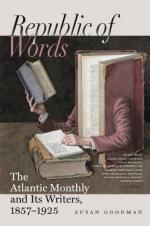The tale stands embalmed forever in the famous letter of Madame de Sevigne to her cousin, M. de Coulanges, written on Monday, December 15, 1670. It can never be translated too often, so we will risk it again.
“I have now to announce to you the most astonishing circumstance, the most surprising, most marvellous, most triumphant, most bewildering, most unheard-of, most singular, most extraordinary, most incredible, most unexpected, most grand, most trivial, most rare, most common, most notorious, most secret, (till to-day,) most brilliant, most desirable; indeed, a thing to which past ages afford but one parallel, and that a poor one; a thing which we can scarcely believe at Paris; how can it be believed at Lyons? a thing which excites the compassion of all the world, and the delight of Madame de Rohan and Madame de Hauterive; a thing which is to be done on Sunday, when those who see it will hardly believe their eyes; a thing which will be done on Sunday, and which might perhaps be impossible on Monday: I cannot possibly announce it; guess it; I give you three guesses; try now. If you will not, I must tell you. M. de Lauzun marries on Sunday, at the Louvre,—whom now? I give you three guesses,— six,—a hundred. Madame de Coulanges says, ’It is not hard to guess; it is Madame de la Valliere.’ Not at all, Madame! ‘Mlle. de Retz?’ Not a bit; you are a mere provincial. ‘How absurd!’ you say; ‘it is Mlle. Colbert.’ Not that, either. ‘Then, of course, it is Mlle. de Crequi.’ Not right yet.




